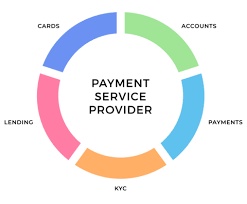The European Union made a rule called PSD2 to make online payments safer and protect consumers better. It also encourages new ideas and improvements in online payments. One important part of PSD2 (Second Payment Services Directive) is called Strong Customer Authentication or SCA. SCA is a set of rules that aim to make online transactions safer. PSD2 and SCA have important effects on companies that provide payment services, businesses that sell products or services, and customers.
What Is PSD2?
PSD2 started in January 2018 to replace the first Payment Services Directive. These new rules make payment service providers follow new requirements. They focus on encouraging competition, creating new ideas, and making payments safer. PSD2 brings in the idea of open banking.
They can use this information to offer you new services. This change has made it easier for FinTech companies to create new and innovative services, such as combining all your accounts in one place and initiating payments. PSD2 SCA compliance is very important for online payment services.
Types of Strong Customer Authentication
Knowledge-Based Authentication: This type requires the user to know something, like a password, a PIN, or answers to security questions. This method is used a lot because it's easy to do and people already know how to use it. However, there are some weaknesses because information can be easily forgotten or stolen.
Possession-Based Authentication: It means using something that the user owns, like a smartphone, a token, or a smart card, to prove their identity. An example is when you receive a password on your phone through a text message. This method is more secure than knowledge-based authentication, but it can be a problem if the user loses the device.
Inherence-Based Authentication: It uses biometric information like fingerprints, facial recognition, iris scans, or voice recognition. Biometric data is personal and different for each person. It is the safest way to prove one's identity. However, it also needs advanced technology and can make people worried about their privacy being compromised.
Requirements of Strong Customer Authentication
Two-Factor Authentication: Using two-factor authentication makes the transaction more secure by making sure that the user is actually the person they say they are.
Dynamic Linking: This means that for every transaction, the authentication process needs to be connected to a particular amount of money and a specific person or organization receiving the payment.
Uniqueness: Each authentication code must be different for each individual transaction and should not be used again in future transactions. PSD2 SCA compliance makes sure of this.
Safe Communication: When you verify your identity, it is made sure that all your private information is secure. This means making sure that information is kept safe when it is being sent and stored.
Implications of PSD2 SCA
For Payment Service Providers
Payment service providers need to change and adjust to these new rules and guidelines. They need to use SCA for all digital transactions under PSD2, except for certain exemptions. This requirement means that they need to make changes to how they handle payments, their systems, and possibly even their entire way of doing business.
For instance, open banking rules require banks to create APIs that let other companies access their customers' account details. This rule brings a big change to the banking industry and encourages more competition and new ideas.
For Merchants
Businesses need to make sure that how they take payments follows SCA rules. This might mean making big changes to how they do their checkout process. Although these changes may appear overwhelming, they also provide chances.
For instance, using SCA could make customers trust more because it makes things more secure. Furthermore, the rules of PSD2 may enable merchants to introduce new payment options, such as direct bank transfers. This could potentially lower the expenses involved in processing payments.
For Consumers
For people who use banking services, the new rules might make things confusing and inconvenient at first because businesses need to change how they accept payments to follow these rules. However, better security measures should lower the chances of online payment scams, and the rules for open banking might result in new and easier ways to access services. Consumers may find it helpful to have services that gather information from different bank accounts and show it in one place. They may also like new ways to pay that don't use the usual card payment networks.
Conclusion
PSD2 and its SCA requirements are big changes in the EU's payment industry. The new rules will be difficult for payment service providers, merchants, and consumers, but they also provide good chances. PSD2 will change the payment industry in the EU by promoting new ideas and making it safer. This will create a more competitive and consumer-friendly atmosphere.
As people around the world observe what happens with PSD2, it wouldn't be surprising if other places also start using similar rules. The story of PSD2 and SCA has just started, but it's obvious that they will have a big and long-lasting effect on the payments industry.


No comments yet